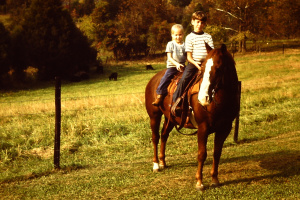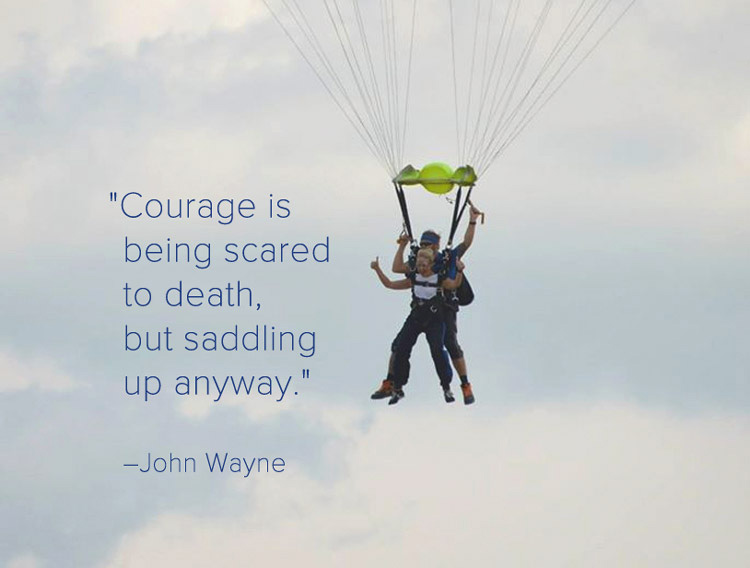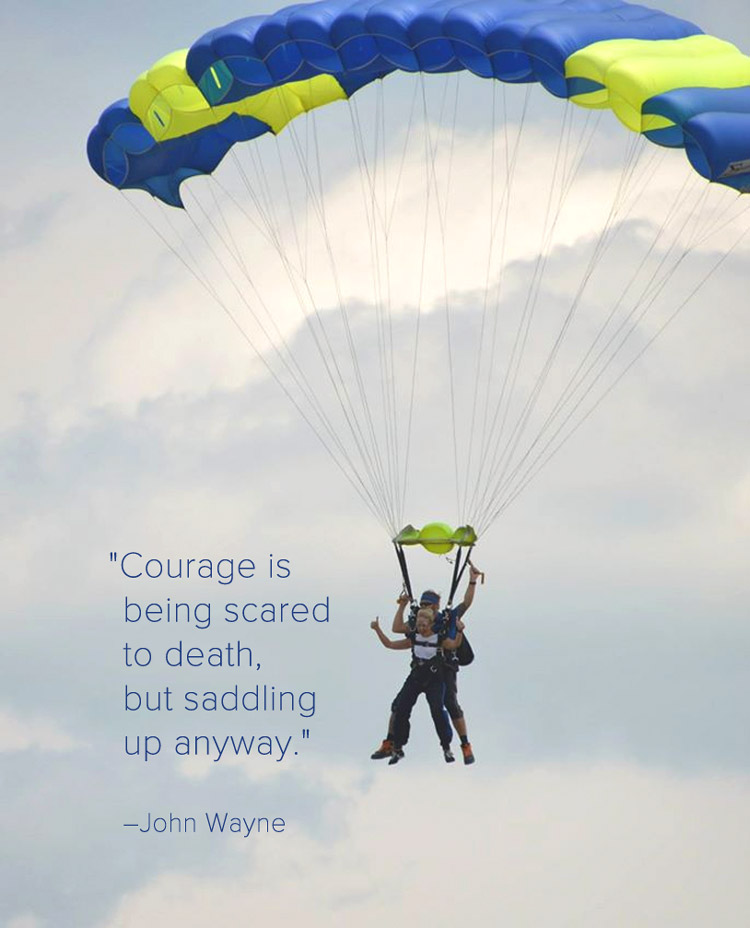
Sep 29, 2020 | Action, Authenticity, Courage, Intention

Years ago, while conducting research to start my business, I read the book, Birthing the Elephant by Karin Abarbanel and Bruce Freeman. In it, I came across a phrase that became a motto to me – “Act as if.”
Presented in the context of becoming an entrepreneur, Act As If conveys the concept of viewing yourself as this new brand and self image and aligning your actions and how you communicate and express yourself.
“Actions change attitudes, motions change emotions, and movements change moods. You might not be able to change your thoughts and your feelings, but you can change your actions. Your actions can change your feelings; your actions can change your thoughts. You can act differently than you feel.”
The day that I read those words, in October 2010, is the day I began my business. For several months prior, I had conducted research around launching a new venture, secured necessary resources, and written a business plan. On paper, it looked great, and when I read the words “act as if,” I thought “what am I waiting for?” I needed reminding…I’m more ready than I think I am. It’s interesting when you’re starting something from scratch. There’s a moment when you literally must flip the switch. So I did.
Act As If hit home for me. I took on the mantle of entrepreneur and business owner – I walked as if, ate as if, slept as if…I went about my day as if this is completely who I am, even though early on there were many days where it felt more like a story than reality. I lived this new brand as if everything in my life up to this moment had prepared me for this.
Now, 10 years later, through evolving iterations of my work, Act As If continues to be my motto, encouraging me to show up as both who I am and who I aspire to be. It helps move me to action when my doubt creeps in telling me I have to wait for the perfect plan before taking the first step. After all, our thoughts and actions create our reality. We manifest what we most desire and focus on.
 Hi, I’m Jeanie Duncan. I work with individuals and organizations as a transformation partner to help them unlock their Truth, discover authentic value, and create meaningful impact in the world. I believe when we are truly aligned with our purpose, we can live and perform at our highest potential. With over 25 years of experience as an executive, CEO, consultant, and coach, I offer strategic, knowledgeable, and experienced guidance for those who are ready to take the courageous leap toward true transformation.
Hi, I’m Jeanie Duncan. I work with individuals and organizations as a transformation partner to help them unlock their Truth, discover authentic value, and create meaningful impact in the world. I believe when we are truly aligned with our purpose, we can live and perform at our highest potential. With over 25 years of experience as an executive, CEO, consultant, and coach, I offer strategic, knowledgeable, and experienced guidance for those who are ready to take the courageous leap toward true transformation.

Sep 29, 2020 | Adventure, Authenticity, Courage, Freedom
 Growing up on a farm, my big brother, Lee, and I filled our days playing with cows and horses, riding our dirt bike, fishing tadpoles out of the creek, and making forts from hay bales that filled our big red barn…the structures soon to became territory for our slingshot battle. The fact that neither of us is blind today truly is a miracle.
Growing up on a farm, my big brother, Lee, and I filled our days playing with cows and horses, riding our dirt bike, fishing tadpoles out of the creek, and making forts from hay bales that filled our big red barn…the structures soon to became territory for our slingshot battle. The fact that neither of us is blind today truly is a miracle.
As thrilling as all these activities were, they paled in comparison to the work we did in the treetops. If we were to account for our total childhood handy work, we’d have a considerable tree house village! We could make an entire lumber pile and 500 nails disappear in a day or two. In the summers, we practically lived in our rickety tree dwellings, carving our names in the thick branches and telling stories, all with our Daisy BB guns never far from our sides.
 When I think about what matters most to me today – things like nature, adventure, creativity, and freedom – it takes me back to my childhood and how much those experiences have shaped who I’ve become. I’m thankful for parents who gave us this beautiful space and so much freedom to explore and play. When I consider all the risky things we did, it gives me proof that kids are surrounded by a pack of angels! I mean, in this photo, we’re about to jump a stack of concrete cinder blocks with a ramp built of plywood and 2X4s and I’m riding that dirt bike in shorts and am barefoot!
When I think about what matters most to me today – things like nature, adventure, creativity, and freedom – it takes me back to my childhood and how much those experiences have shaped who I’ve become. I’m thankful for parents who gave us this beautiful space and so much freedom to explore and play. When I consider all the risky things we did, it gives me proof that kids are surrounded by a pack of angels! I mean, in this photo, we’re about to jump a stack of concrete cinder blocks with a ramp built of plywood and 2X4s and I’m riding that dirt bike in shorts and am barefoot!
I feel these values alive in me today – mostly in my spirit and essence in how I show up in life and work, and in the particulars of my behaviors and decisions. For example, even though I live in the city now, I’m never too far from the woods, a stream, or a trail. My windows are open to feel the breeze and hear all the sounds of nature. Although my “farm” animals now are Hendrix and Fred, my Labrador and Beagle, I love a horseback ride whenever I get the chance. And three years ago, I bought a Triumph motorcycle. I love my riding and camping adventures. It’s through these experiences that I’m most fulfilled.
How have your roots shaped who you are today?

Hi, I’m Jeanie Duncan. I work with individuals and organizations as a transformation partner to help them unlock their Truth, discover authentic value, and create meaningful impact in the world. I believe when we are truly aligned with our purpose, we can live and perform at our highest potential. With over 25 years of experience as an executive, CEO, consultant, and coach, I offer strategic, knowledgeable, and experienced guidance for those who are ready to take the courageous leap toward true transformation.

Jul 21, 2015 | Courage, Intention, Leadership

This quote has always been a favorite of mine. And it’s taking on new meaning after going skydiving with a girlfriend and our sons. It was an exhilarating experience with many rich take-a-ways.
Skydiving is something I’ve always been terrified of, but really wanted to do. When I stop to think about it, it’s not often words like ‘terror’ and ‘desire’ go together in the same sentence.
I believe most of all, I wanted to prove to myself that I could be that afraid of something and still do it. I had this unbridled anticipation that if I could just do it, it would be one of the most amazing experiences ever – soaring, floating, free.
It was all of that. And more.
For a long time, my fear paralyzed this dream. Eventually, I grew tired of hearing my own whining voice (as did my friends), continually expressing my longing to do it and talking myself out of it with endless excuses. I decided – ENOUGH! It’s time to accept my fear and move directly into it.
Having now taken the leap, I realize the powerful metaphor that skydiving is for both fear and freedom. As for fear, there are many things that I’m afraid of. Yet, when I face the fear head-on, it often vanishes…or at least shrinks. And there in its place is a surprising gift – freedom.
This plays out for me in work situations like public speaking and dealing with a challenging client situation, or on the personal side such as sailing in intense conditions with high winds or heavy weather, or mountain biking a technically difficult trail.
This experience is a reminder to examine the task and its importance, purpose, and impact, while weighing the risks and rewards.
A little part of me even believes that acting on this insane courage unlocks some deep, hidden ‘magic power.’ That now – from out of nowhere! – I will leap tall buildings and blast fire from my fingertips…or at least the mortal equivalent of having greater confidence and faith that I ‘can do it’ and it will all work out.
Lastly, I’m left thinking of everything I would have missed had I stopped short of jumping. Bold moves launch us out of our comfort zone and open us up. You can’t help but expand when free falling 120 mph at 12,000 feet! I’ll never see things quite the same again.
Lessons in courage from skydiving:
- Embrace fear and take action anyway. I don’t think it’s about overcoming the fear or that it goes away.
- With any given situation, explore the worst-case scenario, gauge your comfort level, tap into your resources, and work backward to develop a plan from there.
- Take action that helps make you more comfortable. In this case of skydiving, I consulted with others who had done it and sought their advice, researched (exceptionally) reputable skydiving companies to ensure they have (highly) trained professionals and excellent equipment. Risk mitigation!
- Do things often that take your breath away.
- Get out of your comfort zone…sometimes far, far outside. This is where real learning and living takes place. Life is more fun and interesting if it is a series of amazing adventures.
- Be fully present in life – the skydiving free-fall lasts only 60 seconds, and the entire experience is over in 7 minutes. The impact; however, lasts a lifetime.
- Surround yourself with spicy friends who’ll call you out on living small.
 About Jeanie Duncan: Jeanie is President of Raven Consulting Group, a business she founded that focuses on organizational change and leadership development in the nonprofit sector. She is a senior consultant for Raffa, a national firm working with nonprofit clients to lead efforts in sustainability and succession planning, executive transition and search. Additionally, Jeanie serves as adjunct faculty for the Center for Creative Leadership, a top-ranked, global provider of executive leadership education.
About Jeanie Duncan: Jeanie is President of Raven Consulting Group, a business she founded that focuses on organizational change and leadership development in the nonprofit sector. She is a senior consultant for Raffa, a national firm working with nonprofit clients to lead efforts in sustainability and succession planning, executive transition and search. Additionally, Jeanie serves as adjunct faculty for the Center for Creative Leadership, a top-ranked, global provider of executive leadership education.

Apr 13, 2015 | Conflict Management

Recently, I was engaged with a client that had undergone a merger. The transition was going reasonably well overall; however, the combined management teams were entangled in challenge and conflict as they attempted to bring together organization functions, structures, and policies.
Conflict among peers brings with it unique nuances that are different than conflict with a boss or direct report. In this situation, it’s generally a relationship of equals and, as such, it’s especially important to consider positional and personal power, influence, and interpersonal savvy. And like all conflict, it shouldn’t be avoided, but rather managed and resolved through a thoughtful process.
Because organizations rely so heavily on collaborative peer relationships (one-on-one or in teams) to achieve results, using a conflict management process that centers on partnership can be a successful strategy for reaching solution. An important first step is to identify common ground that colleagues can agree on.
Working with this newly merged leadership team, we first considered the following, the knowledge of which provided greater context before diving into the particular issues:
- Get to know your peers – who they are, how they respond to specific emotional triggers, what they value, what kind of organizational power they have.
- Think about who you are within that mix – your own responses, values, and power.
- Together, identify “rules of engagement” and how you will address conflict. Establish clear norms, keep these visible and present, and hold everyone accountable for what they’ve agreed upon. It’s important to ensuring a productive exchange of ideas.
Next, we advanced through a series of steps to successfully work through and resolve the conflict:
Define the problem: Create a clear picture of the challenge, describing it in detail, for example: What are the circumstances around it? What are the different perspectives each person brings? What behaviors are team members observing, both among themselves and others? What are the thoughts and feelings about the conflict?
Gather information: Keep it focused on ideas and procedures, not on emotions. Make sure you understand the facts behind the issue that spawned the conflict. Do you and your peer have opposing strategies or tactics for achieving a specific objective? Think through your ideas and give your peer’s ideas due consideration.
Look for options and different perspectives: Find the missing piece. Seek advice from a trusted external source whose opinions and perceptions differ from your own. Use that to help you work through the situation.
Envision a solution: Based on what you know and have learned, imagine how the conflict might play out. If it’s helpful, try writing a short “script” or talking through the scenario with a partner using the following as a guideline:
- Establish rapport and set the stage: How can you break the ice and lay the groundwork for a discussion? Think of what you might actually say.
- Describe the situation and the behavior. How can you state clearly and objectively what you want in a way that is less likely to provoke excessive defensiveness? Plan what you will say.
- Prepare for the interaction: Outline how the other person might respond and what you will say in response.
- Review and reflect: Answer the following after your meeting: What did you learn? What worked? What could be improved?
Evaluate the answer: Focus your plan on ideas and procedures. If you keep your conflict management plan close to that path, then you and your peer have a better chance of creating a successful resolution.
Learn from the experience: After you resolve the conflict, debrief the process with yourself and with your conflict partner, if possible. Did the resolution of the conflict settle the issue? Did it improve your relationship with your peer? If you can’t answer yes to both of these questions, then start planning for the next conflict with this peer. It may take the process more than once to establish rapport, settle an issue, and establish a way of working together through challenges.
It amazes me the degree to which business success depends on the ability of leaders to work together collaboratively and how little time and preparation is typically taken from the start to establish the essential foundation of trust and a true sense of “team.” Like my recently merged client organization, leaders frequently jump into their day-to-day execution of priorities as if they have a historical context of working together, and quickly encounter clashes with values, expectations, incorrect assumptions, and more. Its no wonder they encounter such blocks and barriers.
These steps provide critical considerations as you examine your approach to managing conflict with peers. But before you adopt these tactics, be sure you understand as much about yourself and your peer as you can. Your success at managing peer conflicts relies on your understanding how emotional hot buttons, personal values, and organization and personal power affect, and are affected by, conflict situations and how they influence the resolution.
________
Cartwright, T. (2003). Managing conflict with peers. Greensboro, NC: Center for Creative Leadership.
Also read these related posts:
Perspectives on Conflict with Your Boss
Bridge the Divide of Conflict With Direct Reports
Team Trust – Critical Yet Rare
Into the Storm: Mastering Team Conflict
 About Jeanie Duncan: Jeanie is President of Raven Consulting Group, a business she founded that focuses on organizational change and leadership development in the nonprofit sector. She is a senior consultant for Raffa, a national firm working with nonprofit clients to lead efforts in sustainability and succession planning, executive transition and search. Additionally, Jeanie serves as adjunct faculty for the Center for Creative Leadership, a top-ranked, global provider of executive leadership education.
About Jeanie Duncan: Jeanie is President of Raven Consulting Group, a business she founded that focuses on organizational change and leadership development in the nonprofit sector. She is a senior consultant for Raffa, a national firm working with nonprofit clients to lead efforts in sustainability and succession planning, executive transition and search. Additionally, Jeanie serves as adjunct faculty for the Center for Creative Leadership, a top-ranked, global provider of executive leadership education.

Mar 21, 2015 | Conflict Management, Leadership
 As a sailor, when I see a storm building on the horizon, I intentionally alter my path to circumvent the system – tacking to port or starboard, or identifying a cove or marina to head into for safety…anything to escape the danger that lies ahead.
As a sailor, when I see a storm building on the horizon, I intentionally alter my path to circumvent the system – tacking to port or starboard, or identifying a cove or marina to head into for safety…anything to escape the danger that lies ahead.
In the business setting, our human tendency is to do the same – avoid the storm, the conflict, that we see brewing. We are a conflict-adverse culture and society. Often, our last (or near last) resort is moving directly into the issue, tension, and challenge to attend to what must be addressed.
So, why is this? Why do we avoid addressing and resolving conflict? Why is it so difficult? Afterall, it’s often identified as one of the most important competencies required of top leaders to succeed. Beyond the fact that conflict is flat out uncomfortable, I believe our aversion is due to a few key things:
- Many of us learn early on in our formative years to avoid making waves, to listen to others, and be polite. Personally, as a female growing up in the southeastern United States, I often would say one thing and mean another – too afraid to share my true thoughts and risk offending someone. My parents, as well as others who shaped and influenced me early on, taught me that questioning and being direct was considered rude, bossy, and aggressive, so I simply didn’t practice it.
- When starting out in our careers, we’re young, new in a position, trying to gain an understanding of the office culture, and learning the political landscape. We’re encouraged (whether expressed or not) to be tactful and diplomatic – “keep your head down and get the job done” – or else become known as the difficult employee…sometimes risking losing our job altogether.
- When we advance and move from a role as an individual contributor to a role of leading others, the relationships necessary for working together often spawn conflict. Our tendency can be to revert back to what we know well – our individual strengths, whether technical, financial, sales, etc. – and avoid the sticky, messy group dynamics of gaining alignment and commitment to work toward a common goal. We can also avoid acting as a result of preservation (of relationships, tradition, etc.) and territory, digging our heels in to protect our own viewpoints, values, and beliefs and refuse to move.
Conflict is difficult for a number of reasons – those mentioned above and others you can surmise. But difficult as it may be, addressing and resolving conflict is critically important to individual and organization success. It begins with defining what conflict is in the first place and understanding it as something to be dealt with instead of avoided.
At its core, conflict is disharmony and discord between people, interests, or ideas. It’s also natural to the human experience. Where there are people, there will be conflict. Afterall, people are emotional beings. We have deeply held beliefs, values, and experiences that have shaped who we are. We’re bound to bring this into how we express ourselves, make decisions, and communicate with one another. And when we do, we will differ, disagree, and sometimes clash. The key to making it work and being effective, is to learn to have open, honest debate and dialogue around issues of importance to the team. It can only happen if vulnerability-based trust exists.
Teams without trust often argue destructively because they are laced with politics, pride, and competition, rather than humble pursuit of truth. When trust exists, team members say everything that needs to be said and it leaves less to talk about behind closed doors. Conflict is always at least a little uncomfortable. And it’s inevitable that people will feel under some degree of personal attack. This is still no reason to avoid conflict.
As Patrick Lencioni states in his book, The Five Dysfunctions of a Team, “If team members are not making one another uncomfortable at times, if they’re never pushing one another outside of their emotional comfort zones during discussions, then it is extremely likely that they’re not making the best decisions for the organization.”
The problem around conflict that I most often see in relationships and teams is artificial harmony with no conflict at all, coupled with great fear of moving in that direction. It reminds me of a friend who told me that he and his girlfriend of two years had never had an argument. He shared this as a point of pride; however, I see this as a warning sign. The ability to have healthy, productive conflict is a symbol of maturity and sustainability in a relationship. When a relationship or team shows that it can survive an incident of significant conflict, it builds greater trust and confidence in the relationship.
Let’s examine a few key practices to engaging in and managing team conflict:
- Begin with trust building exercises. A team (or a relationship of any kind) and its members must know and trust one another before it can engage in courageous conversations and move into and through conflict together. (See key tips in my blog post: Team Trust – Critical Yet Rare)
- Identify “rules of engagement” and how you will address conflict together. Establish clear norms, keep these visible and present, and hold everyone accountable for what they’ve agreed upon. It’s important to ensuring a productive exchange of ideas.
- Gain clarity on viewpoints and comfort levels with conflict, because they can differ greatly. On one extreme are the people who are comfortable arguing passionately; on the other are those who are not comfortable expressing the mildest of dissention. Know where your team members fall, why they fall there, and what’s important to them as you work together to address conflict.
- Be clear on role clarity and alignment. Individual team members need to be crystal clear on their own role, how their role supports the team’s work, and how the collective team’s work supports the organization’s mission.
- Create a feedback rich environment in the spirit of understanding one another’s behaviors and the impact of those behaviors on teamwork and effectiveness. Foster a culture that encourages team members to give feedback to one another in a positive, non-judgmental manner, and then members use that feedback to shape and adapt their behaviors to yield the greatest results.
- Leaders must be miners of conflict. It’s important for a leader “not only to light the fuse of good conflict, but also to gently fan the flames,” states Lencioni. “Even when team norms for conflict have been set, most people will shy away from conflict.” Seek out opportunities for unearthing buried conflict and require team members to address the issues. An issue lying dormant is merely simmering beneath the surface and can be on the verge of erupting…or can quietly undermine progress.
Given human nature and the pressures of organizational life, there’s likely to always be conflict wherever people are together. But this conflict can be managed so that it’s a productive encounter that leaves individuals engaged in their work, honored and supported for their ideas and beliefs, and the organization on a path to mission delivery success.
_______
Lencioni, P. (2005). Overcoming the five dysfunctions of a team: a field guide. San Francisco: Jossey-Bass.
Also read these related blog posts:
Perspectives on Conflict with Your Boss
Bridge the Divide of Conflict with Direct Reports
Team Trust – Critical Yet Rare
A Process for Managing Peer Conflict
 About Jeanie Duncan: Jeanie is President of Raven Consulting Group, a business she founded that focuses on organizational change and leadership development in the nonprofit sector. She is a senior consultant for Raffa, a national firm working with nonprofit clients to lead efforts in sustainability and succession planning, executive transition and search. Additionally, Jeanie serves as adjunct faculty for the Center for Creative Leadership, a top-ranked, global provider of executive leadership education.
About Jeanie Duncan: Jeanie is President of Raven Consulting Group, a business she founded that focuses on organizational change and leadership development in the nonprofit sector. She is a senior consultant for Raffa, a national firm working with nonprofit clients to lead efforts in sustainability and succession planning, executive transition and search. Additionally, Jeanie serves as adjunct faculty for the Center for Creative Leadership, a top-ranked, global provider of executive leadership education.


 Hi, I’m Jeanie Duncan. I work with individuals and organizations as a transformation partner to help them unlock their Truth, discover authentic value, and create meaningful impact in the world. I believe when we are truly aligned with our purpose, we can live and perform at our highest potential. With over 25 years of experience as an executive, CEO, consultant, and coach, I offer strategic, knowledgeable, and experienced guidance for those who are ready to take the courageous leap toward true transformation.
Hi, I’m Jeanie Duncan. I work with individuals and organizations as a transformation partner to help them unlock their Truth, discover authentic value, and create meaningful impact in the world. I believe when we are truly aligned with our purpose, we can live and perform at our highest potential. With over 25 years of experience as an executive, CEO, consultant, and coach, I offer strategic, knowledgeable, and experienced guidance for those who are ready to take the courageous leap toward true transformation. 

 Growing up on a farm, my big brother, Lee, and I filled our days playing with cows and horses, riding our dirt bike, fishing tadpoles out of the creek, and making forts from hay bales that filled our big red barn…the structures soon to became territory for our slingshot battle.
Growing up on a farm, my big brother, Lee, and I filled our days playing with cows and horses, riding our dirt bike, fishing tadpoles out of the creek, and making forts from hay bales that filled our big red barn…the structures soon to became territory for our slingshot battle. When I think about what matters most to me today – things like nature, adventure, creativity, and freedom – it takes me back to my childhood and how much those experiences have shaped who I’ve become. I’m thankful for parents who gave us this beautiful space and so much freedom to explore and play. When I consider all the risky things we did, it gives me proof that kids are surrounded by a pack of angels! I mean, in this photo, we’re about to jump a stack of concrete cinder blocks with a ramp built of plywood and 2X4s and I’m riding that dirt bike in shorts and am barefoot!
When I think about what matters most to me today – things like nature, adventure, creativity, and freedom – it takes me back to my childhood and how much those experiences have shaped who I’ve become. I’m thankful for parents who gave us this beautiful space and so much freedom to explore and play. When I consider all the risky things we did, it gives me proof that kids are surrounded by a pack of angels! I mean, in this photo, we’re about to jump a stack of concrete cinder blocks with a ramp built of plywood and 2X4s and I’m riding that dirt bike in shorts and am barefoot!






